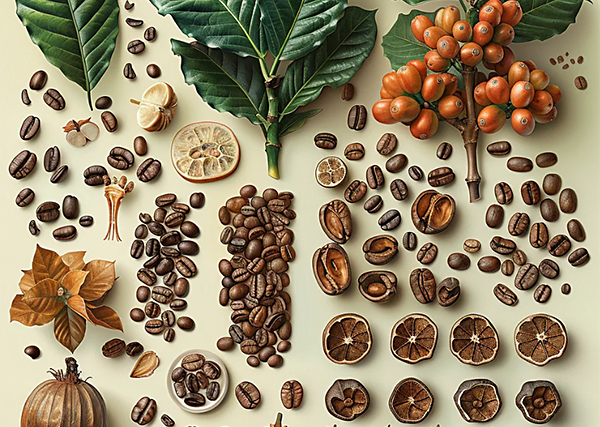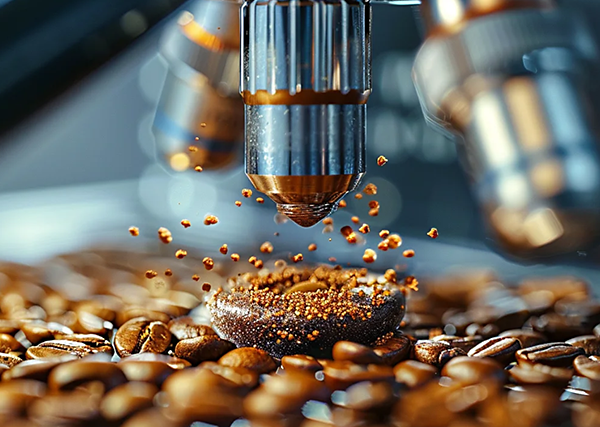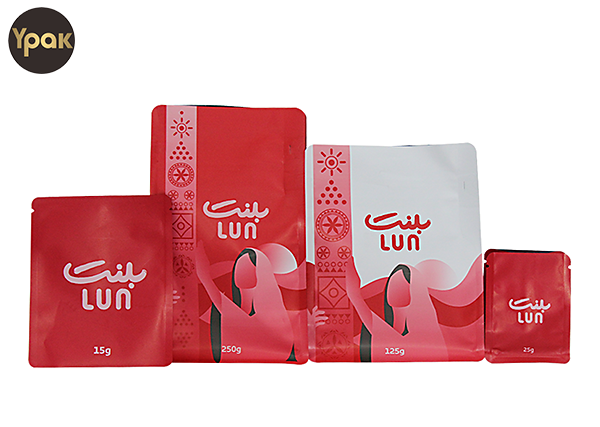Coffee Knowledge - Coffee Fruits and Seeds
Coffee seeds and fruits are the basic raw materials for making coffee. They have complex internal structures and rich chemical components, which directly affect the taste and flavor of coffee drinks.
First, let's take a look at the internal structure of coffee fruits. Coffee fruits are often called coffee cherries, and their exterior includes the peel, pulp, and endocarp. The peel is the outer layer of the cherry, the pulp is the sweet fleshy part of the cherry, and the endocarp is the film that wraps the seeds. Inside the endocarp, there are usually two coffee seeds, which are also called coffee beans.
Coffee seeds and fruits contain a variety of chemical components, the most important of which is caffeine. Caffeine is a natural alkaloid that has the effect of stimulating the nervous system and is the main ingredient in coffee drinks that makes people feel excited. In addition to caffeine, coffee seeds and fruits are also rich in antioxidants, such as polyphenols and amino acids, which are beneficial to human health.
In terms of global coffee production, according to data from the International Coffee Organization (ICO), the global annual coffee production is about 100 million bags (60 kg/bag), of which Arabica coffee accounts for about 65%-70%. This shows that coffee is one of the most popular drinks in the world and is of great significance to the global economy.


Causes of coffee bitterness
One of the sources of coffee bitterness is brown pigments. Large molecular brown pigments will have a stronger bitterness; as the roasting process deepens, the amount of brown pigments will also increase, and the proportion of large brown pigments will also increase accordingly, so the bitterness and texture of deeply roasted coffee beans will be stronger.
Another reason for the bitterness of coffee is the "cyclic diamino acids" formed by amino acids and proteins after heating. The molecular structures they form are different, and the bitterness is also different. In addition to coffee, cocoa and dark beer also have such ingredients.
So can we control the degree of bitterness? The answer is of course yes. We can control the bitterness by changing the type of coffee beans, the degree of roasting, the roasting method, or the extraction method.
What is the sour taste in coffee?
The sour ingredients in coffee beans include citric acid, malic acid, quinic acid, phosphoric acid, etc. But this is not the sour taste we feel when we drink coffee. The sour taste we taste mainly comes from the acid produced during the roasting process.
When roasting coffee beans, some components in the beans will undergo chemical reactions to form new acids. A more representative example is that chlorogenic acid decomposes to form quinic acid, and oligosaccharides decompose to form volatile formic acid and acetic acid.
The most acid in roasted beans is quinic acid, which increases as the roasting deepens. It not only has a high content, but also has a strong sour taste, which is the main source of coffee sourness. Others such as citric acid, acetic acid, and malic acid are also relatively high in coffee. The strength and properties of various acids are different. Although they are all sour, their ingredients are actually very complex.
The way the sour taste is released is different depending on the state of the pattern. There is a substance in quinic acid that can both emit the sour taste and hide the sour taste. The reason why brewed coffee becomes more and more sour is because the sourness that was originally hidden slowly dissipates over time.


To maintain the fresh flavor of coffee beans, you first need a high-quality packaging and a packaging supplier with stable production.
We are a manufacturer specializing in producing the coffee packaging bags for over 20 years. We have become one of the largest coffee bag manufacturers in China.
We use the best quality WIPF valves from Swiss to keep your coffee fresh.
We have developed the eco-friendly bags, such as the compostable bags and recyclable bags,and the latest introduced PCR materials.
If you need to view the YPAK qualification certificate, please click to contact us.
Post time: Aug-02-2024







